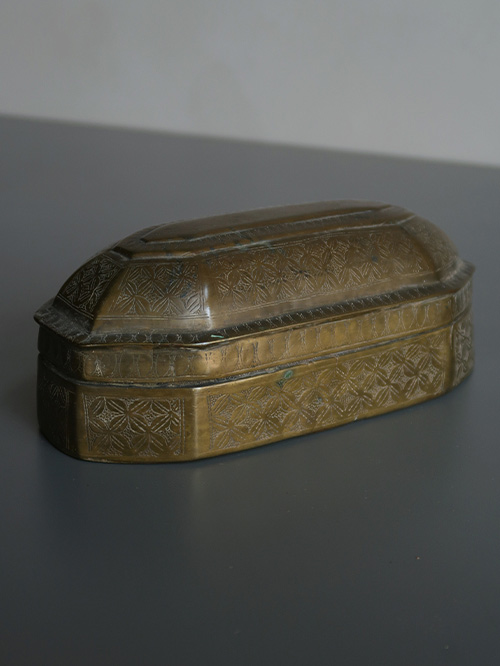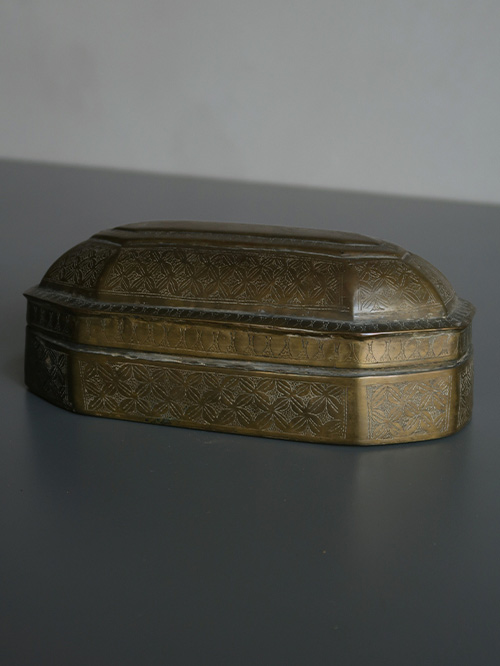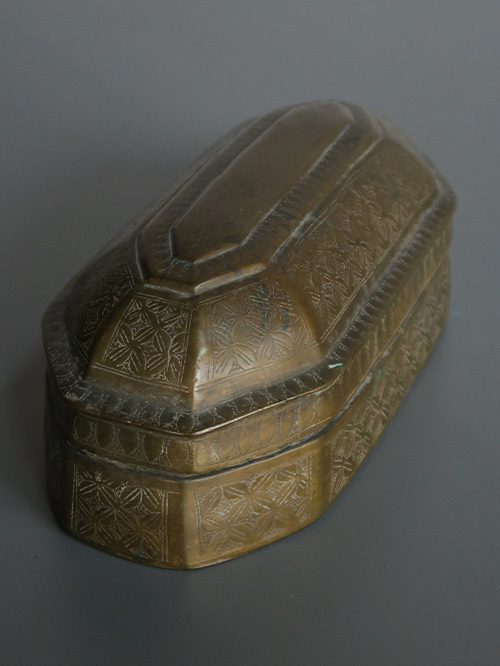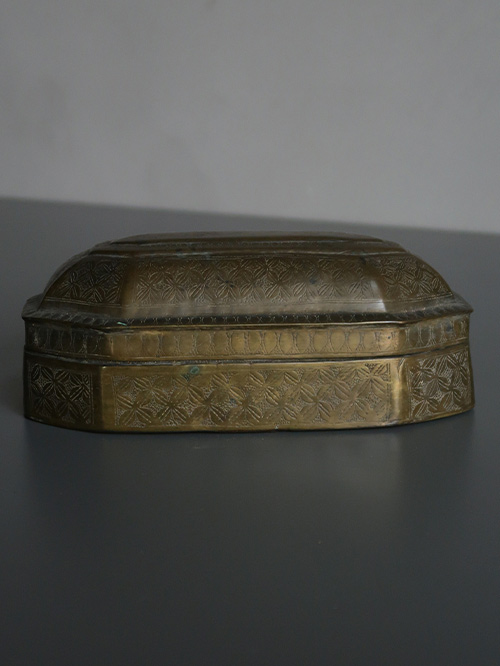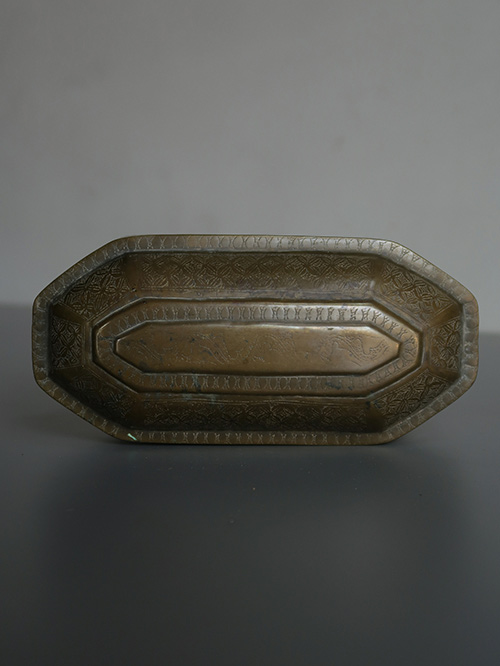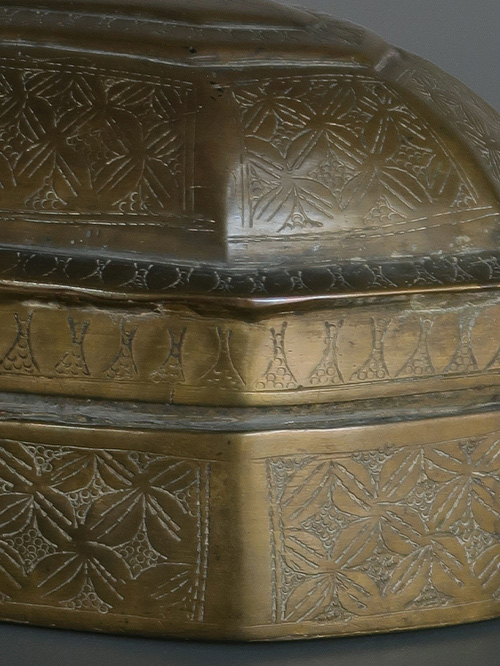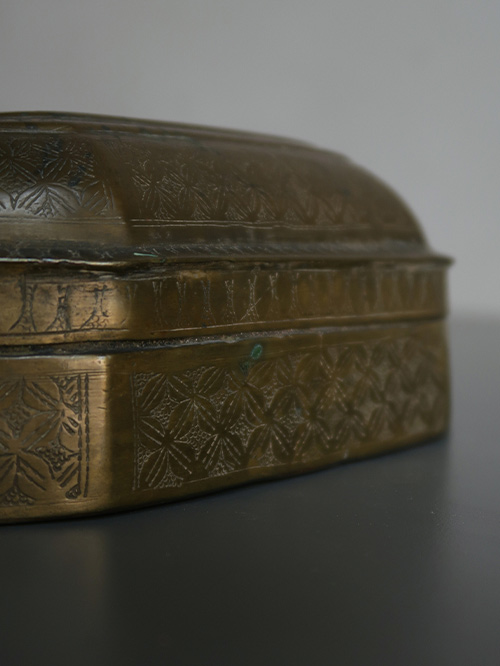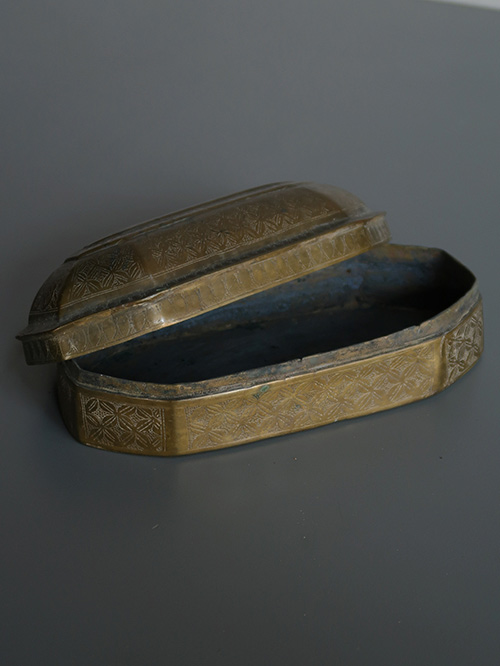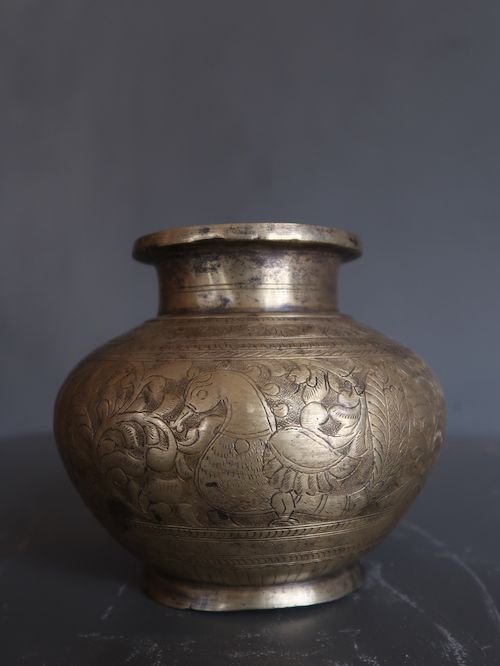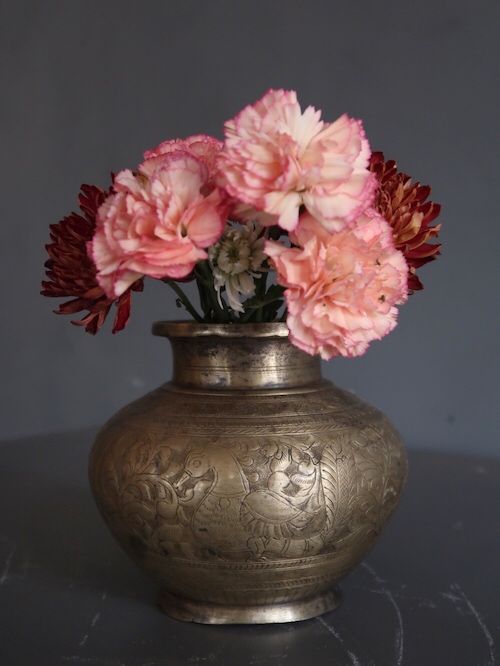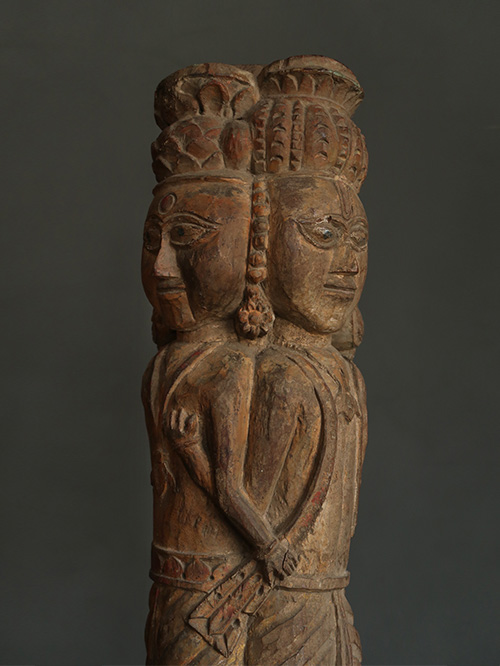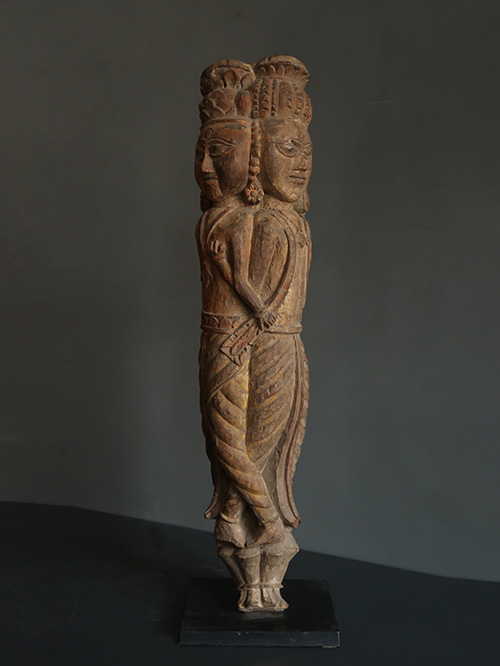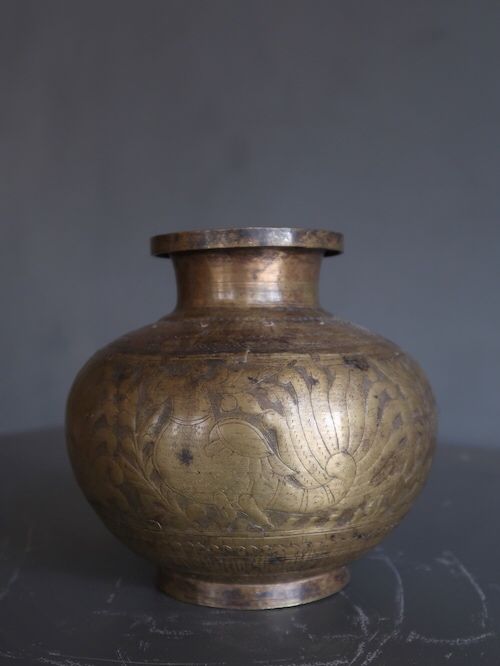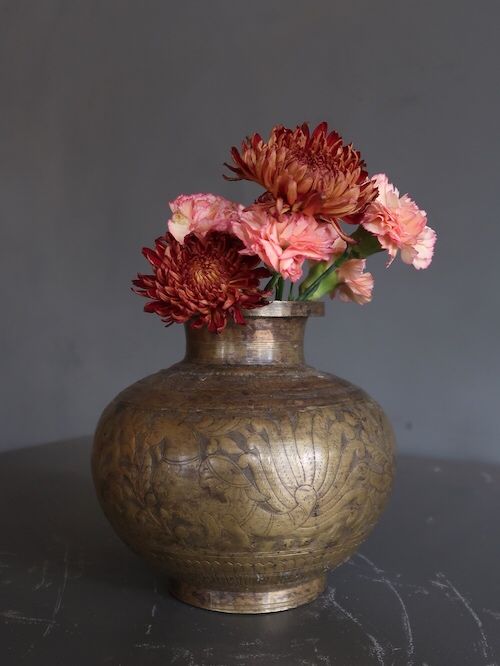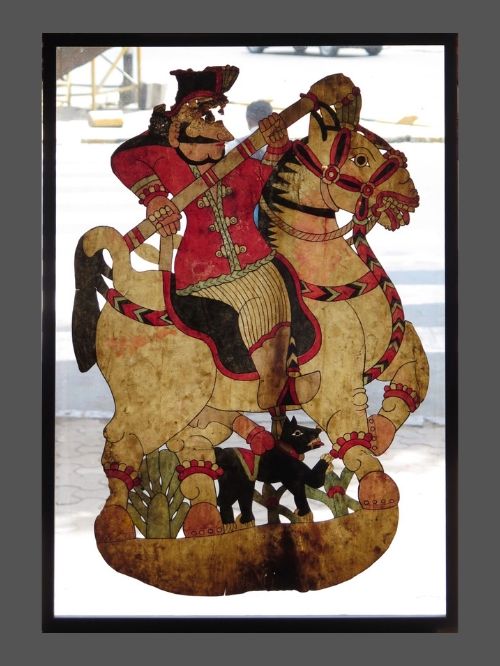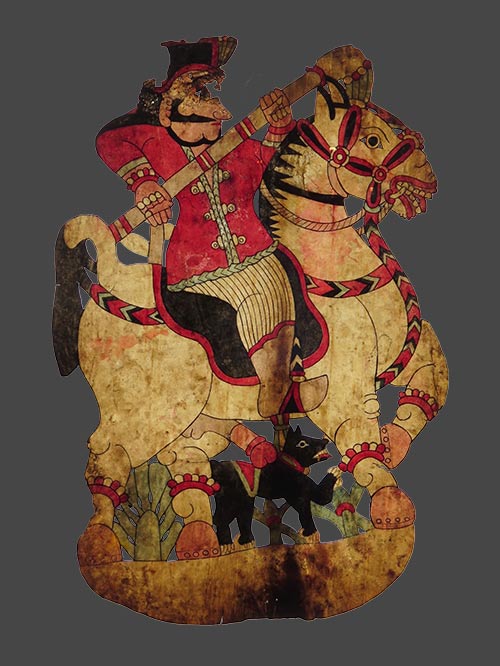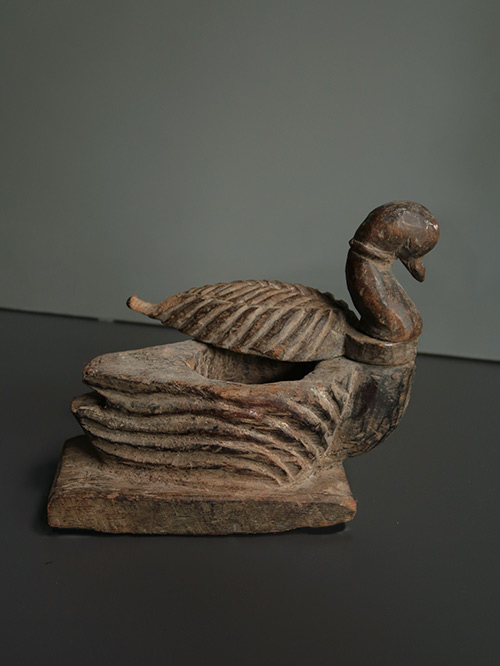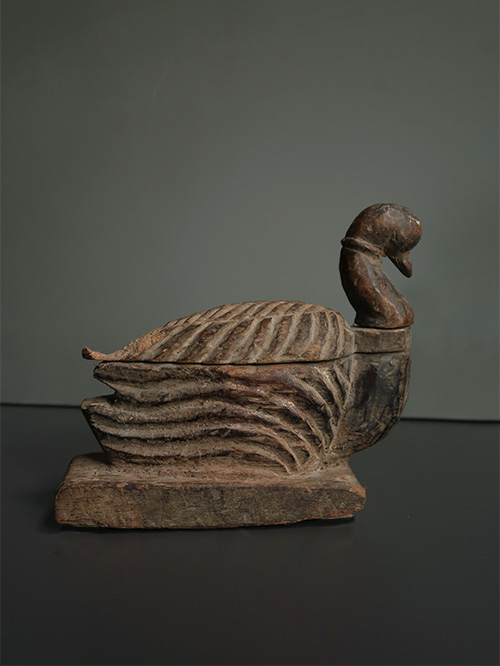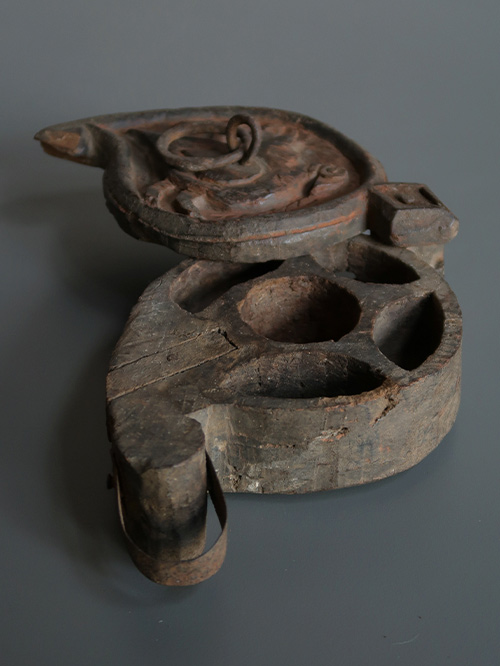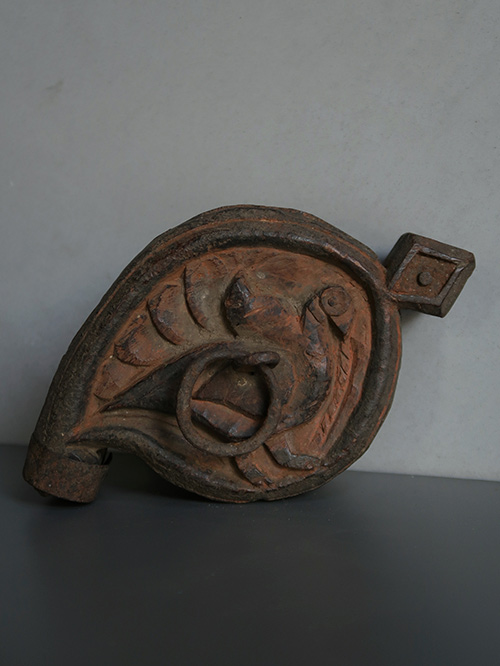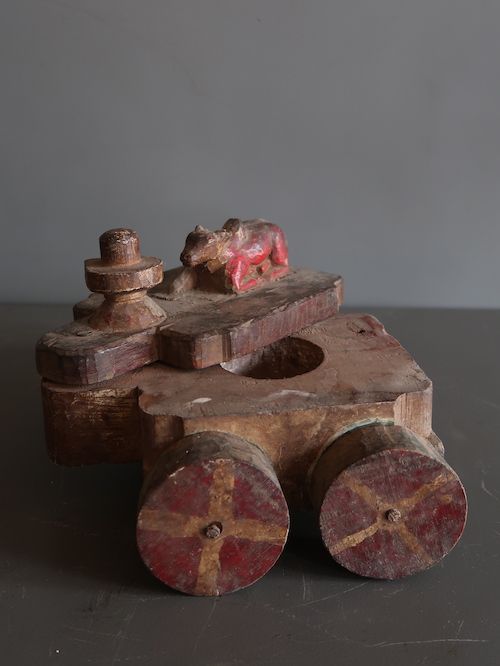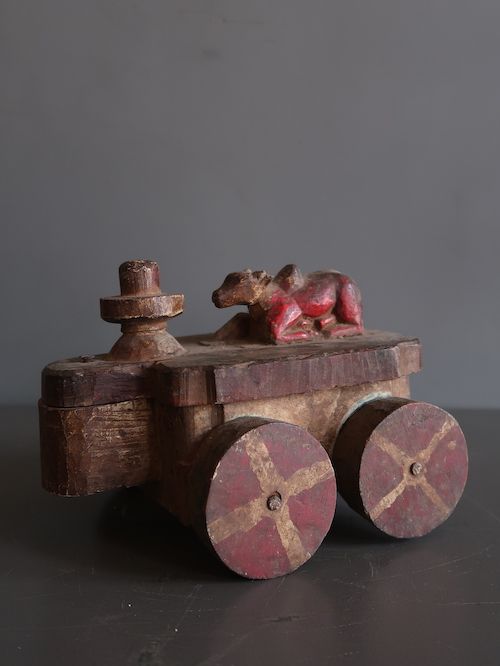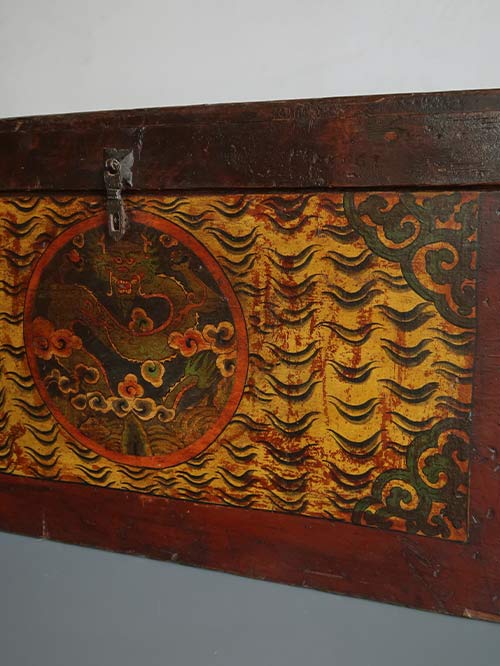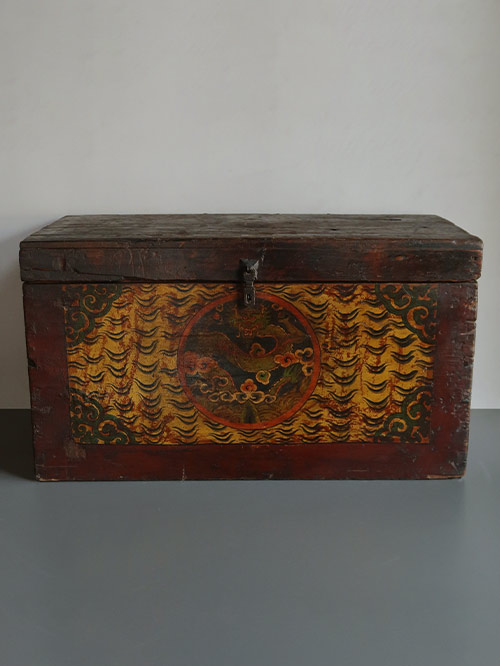Central India/ North Deccan
Brass Alloy
A fine octogonal shaped betel box with a hinged lid. The box has a low domed cover with chamfered sides and a rounded platform at the top. The box is decorated with geometric and foliate motifs.
The chewing of betel, or pan as it is called in North India — that is, thin slices of the nut of the Areca palm (supam) mixed with lime paste (chunam) made from ground seashells and spices, the whole wrapped in a fresh leaf of the betel tree — has had a long history of India and many other parts of South Asia. It is particularly appreciated after meals because of its alkaline content, but it can be consumed at any moment, and has come to be associated with a leisured and refined style of life. Its consumption was important both at court in the etiquette of the upper classes. During royal audience (darbar), the ruler would often ‘calmly’ chew betel, perhaps to show his detached, and therefore superior, judgement. The offering of the royal pan to a courtier was a sign of extraordinary favour, and an even greater honour would be the offering of the betel container (pandan).
Size (cms): 8(H) x 22(W) x 10(D)
Size (inches): 3(H) x 8.5(W) x 4(D)

